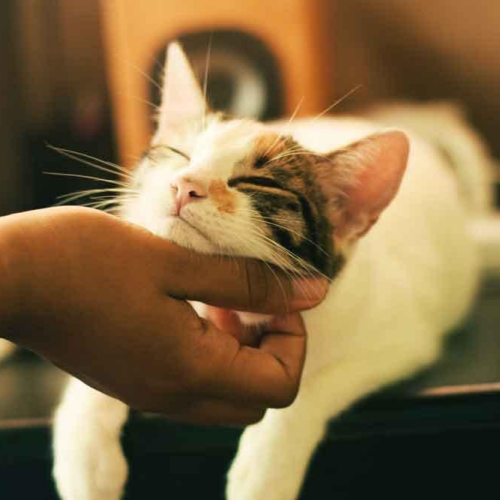
While hiking the trails of Arizona I sometimes find myself hanging by a Saguaro Cactus to catch my breath or massaging creaky knees in the shade. Other hikers whizz by recognizing the body language of an old guy. Our pets’ bodies can similarly provide us clues how they’re feeling to help us distinguish between the natural aging process and the existence of an issue. It is important to be especially diligent in older animals, as there are certain physical and mental attitudes that can alert us to a potential problem so we can take necessary remedial actions.
· Bumping into stationary objects or having difficulty locating a favorite toy often signals vision loss. Lens opacity is a fairly common occurrence in older dogs and usually doesn’t initially affect vision but can worsen with time.
· As pets age, a strong, offensive odor from the mouth may be an early sign of dental issues or even a possible tumor in the oral cavity. Rubbing faces on rugs or paws can signal oral or dental problems.
· Large and giant breeds may begin to experience difficulty getting up or laying down, going up and down stairs or rising after long naps. This could be a little “old age” setting in, or something that needs evaluation. Stiff walking, swaying or toe dragging, however, indicates something more serious. A hunched back with an awkward gait might indicate a medical issue in the abdomen.
· If your pet no longer responds to your commands (cats always ignore us), or seems oblivious of loud or sudden noises, hearing issues may have begun. Complete loss can happen at any age.
· Pacing or other compulsive behaviors often heralds cognitive decline. While yawning and panting often signal anxiety and fear.
· Random urinating in the house or leakage while napping may be due to urinary incontinence, a condition more prevalent in spayed females, although males too can be afflicted.
· Excessive consumption of water, especially if accompanied by increased urination can be a sign of kidney slowdown or even worse.
· Elderly dogs tend to sleep a little bit more than young pups simply due to natural aging, especially if there is hearing or vision issues. Excessive sluggishness may indicate a metabolic problem.
· Weight gain happens in dogs due to a naturally slowing metabolism, combined with too many calories and too little exercise (sound familiar?). But it can also be associated with certain disease or thyroid dysfunction.
· Lumps and bumps are part of normal skin aging, but a veterinarian should check any that appear rapidly or bleed. Fatty lipomas are pretty common under-the-skin bumps.
· A dry, scraggly coat, itching and hair loss could be an indication of decreased absorption of nutrients or medical condition that needs attention.
Pets age a little more rapidly than we do, although that is not such a bad thing if your dog and cat stay active and continue to enjoy life. Your veterinarian is your older animals’ best friend, and should be consulted with any concern, I recommend yearly checkups to ensure that aging is graceful and not painful. Being diligent and attentive to your dog’s body language, you will help maintain his get up and go.
Contact: VETFLIX
Phone: 401-859-1579
E-mail: info@vetflix.pet
Add: 26 Gooding Ave, Bristol, RI 02809